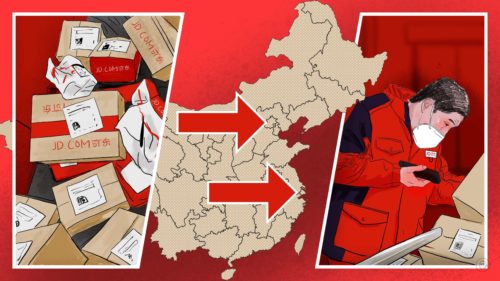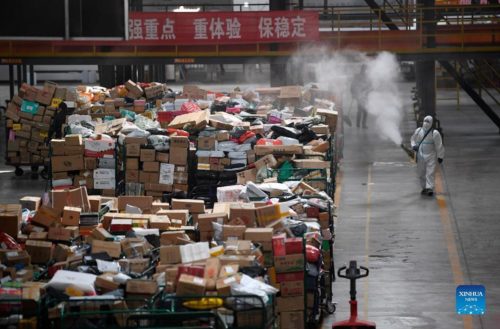China’s express delivery price war is finally over
China’s express delivery companies are emerging from a long price war that was caused by an upstart competitor from Southeast Asia.

On July 4, the China Federation of Logistics and Purchasing released the latest data for the Logistics Prosperity Index (LPI), which measures the state of — and demand for — logistics in China, and economic and business conditions more generally:
- In June, the LPI was 52.1%, up 2.8 percentage points from the previous month, and a full 8.3 percentage points from the level in April (43.8%).
- Among the sub-indices, the New Orders Index for June was 53.3%, up 4.5 percentage points from the previous month, indicating that demand for logistics is gradually increasing.
- (The LPI averaged 54% from December 2011 to June 2022, reaching an all-time high of 59.5% in March 2012 and a record low of 26.2% in February 2020.)
Late in June, the Ministry of Transport reported that total domestic railway, water transport, and postal express freight volume in the first half of this year exceeded the levels of the same period in 2019: The express delivery volume has reached about 185% of the same level in 2019.
It appears that China’s logistics industry, and in particular express delivery, is back to normal and running at full tilt. In the background, however, China’s express delivery companies have been locked in a protracted price war and race to the bottom since 2019, which has not only cut their profit margins to the bone, but also contributed to many problems for customers, notably, delayed deliveries.
But the price war may finally be over: In May, China’s largest express delivery companies recorded a 20% rise in revenue per delivery.
The context
In 2019, China’s express delivery industry was already saturated, with the likes of YTO Express 圆通速递, STO Express 申通快递, Yunda Express 韵达速递, and JD Logistics 京东物流 competing in an industry with thin margins that requires heavy assets and continuous capital expenditure. But then, a new competitor entered the market from Southeast Asia that set the industry off on a race to the bottom: J&T Express 极兔速递.
Founded in Indonesia in 2015, J&T Express started expanding across Southeast Asia in 2017, entered China in 2020, and immediately set off a vicious round of competition with dubious tactics:
- J&T Express started a price war by dropping its single-item delivery fee all the way down to below one yuan, prompting all the main players to join in: Overall, the average price per delivery decreased from 24.57 yuan ($3.66) per item in 2010 to 10.21 yuan ($1.52) per item in January 2021.
- After just 10 months, in early 2021, J&T Express’s daily delivery volume exceeded 20 million, an achievement that took Yunda Express 19 years, YTO Express Group 18 years, and STO Express 25 years to achieve.
- Yet at the same time, there were reports that some J&T Express outlets had huge backlogs of deliveries, that staff were not being paid, and even that an employee in Jiangsu Province had run away with the company’s funds.
- The company’s service delivery declined and its reputation suffered: According to a consumer satisfaction survey published on the website of the State Post Bureau, in the first quarter of 2022, J&T Express had the lowest satisfaction rate in the industry.
The price war caused widespread carnage in the industry: In 2021, JD Logistics, for example, reported a net loss of 15.66 billion yuan ($2.33 billion), a year-on-year decrease of 287.9%, and STO Express reported a net loss of 909 million yuan ($135.48 million), a year-on-year decrease of 2,603%.
In mid-2021, however, the central and local governments started to issue regulations to address the price war, requiring express delivery companies not to provide delivery services at prices below cost. The effect was gradual but clearly evident: From July 2021, declines in revenue per delivery started to recede, and from November last year, they began to increase. By May, revenue per delivery of STO Express, YTO Express, and Yunda Express were 2.55 yuan ($0.38), 2.51 yuan ($0.37), and 2.49 yuan ($0.37), respectively, all well in excess of 20% year-on-year growth rates.
The takeaway
China’s express delivery companies were locked in a fierce price war over the last few years that contributed to delays with deliveries and other problems in an industry that played a crucial role in delivering vital products to consumers who were often locked down in their homes.
As supply chain snarl-ups ease, perhaps the industry will also return to a more healthy state for delivery company employees, subcontractors, and shareholders. But consumers might have to get used to higher prices.






